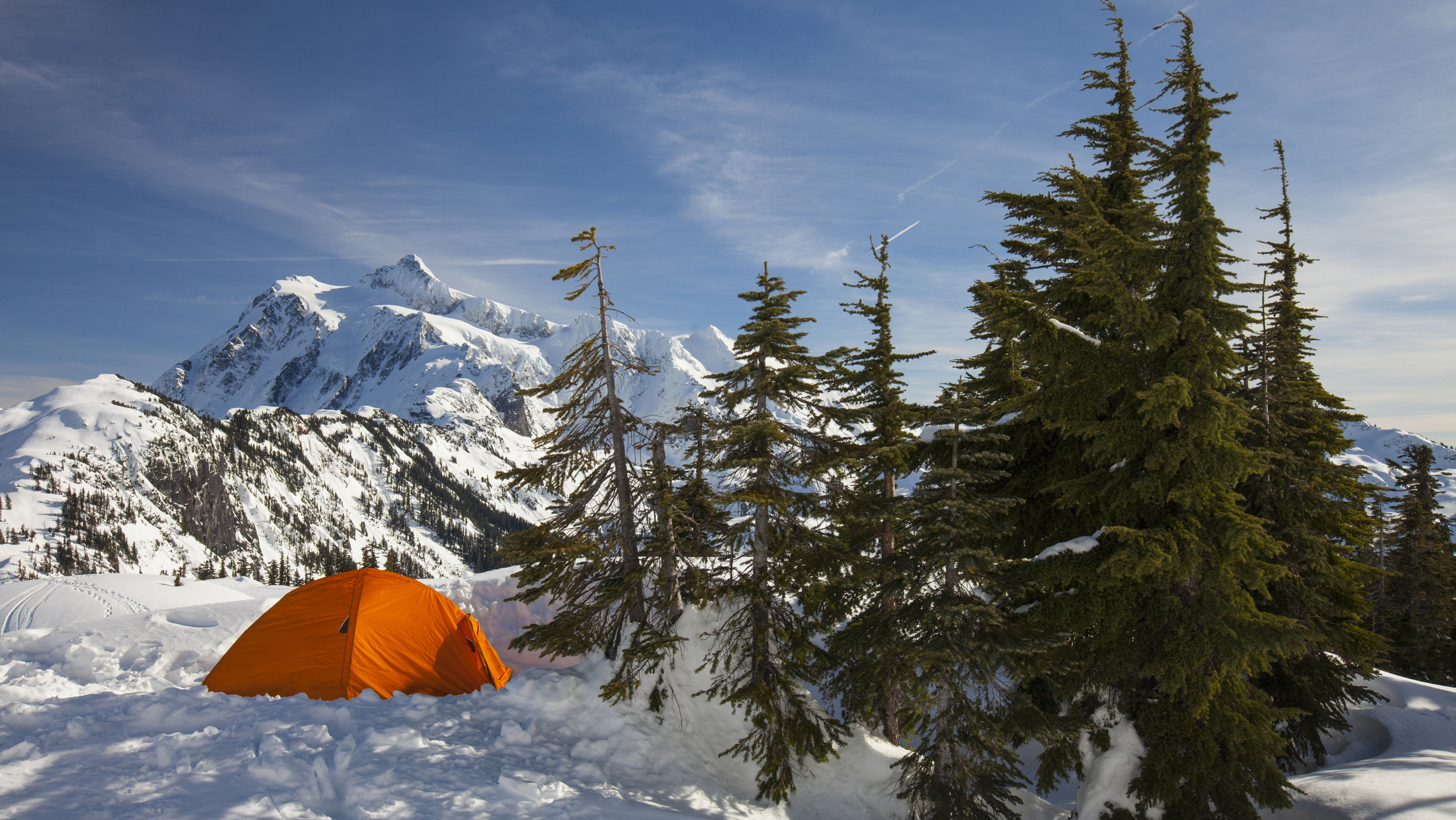
Winter camping is challenging and rewarding in the same breath. Many campgrounds are closed for the season and many perceive venturing into the windswept, snowy wilds with a tent as esoteric to say the least. However, with the right kit, you can enjoy epic camping adventures in stunning, winter wonderland settings.
The right kit is the key phrase here. Heading out in the colder months with 2- or 3-season camping kit isn’t a great idea. Standard tents, sleeping bags and sleeping pads aren’t designed with the harsh realities of winter in mind. No, for this rather niche activity, you’re gonna need some specialized kit. A word of warning, winter camping kit isn’t the cheapest, but if you shop around a little and keep your ear to the ground, you can often snare a decent deal.
So, without further ado, here’s how I, as a qualified Mountain Leader and avid camper, update my camping kit for winter.
How I update my camping kit for winter
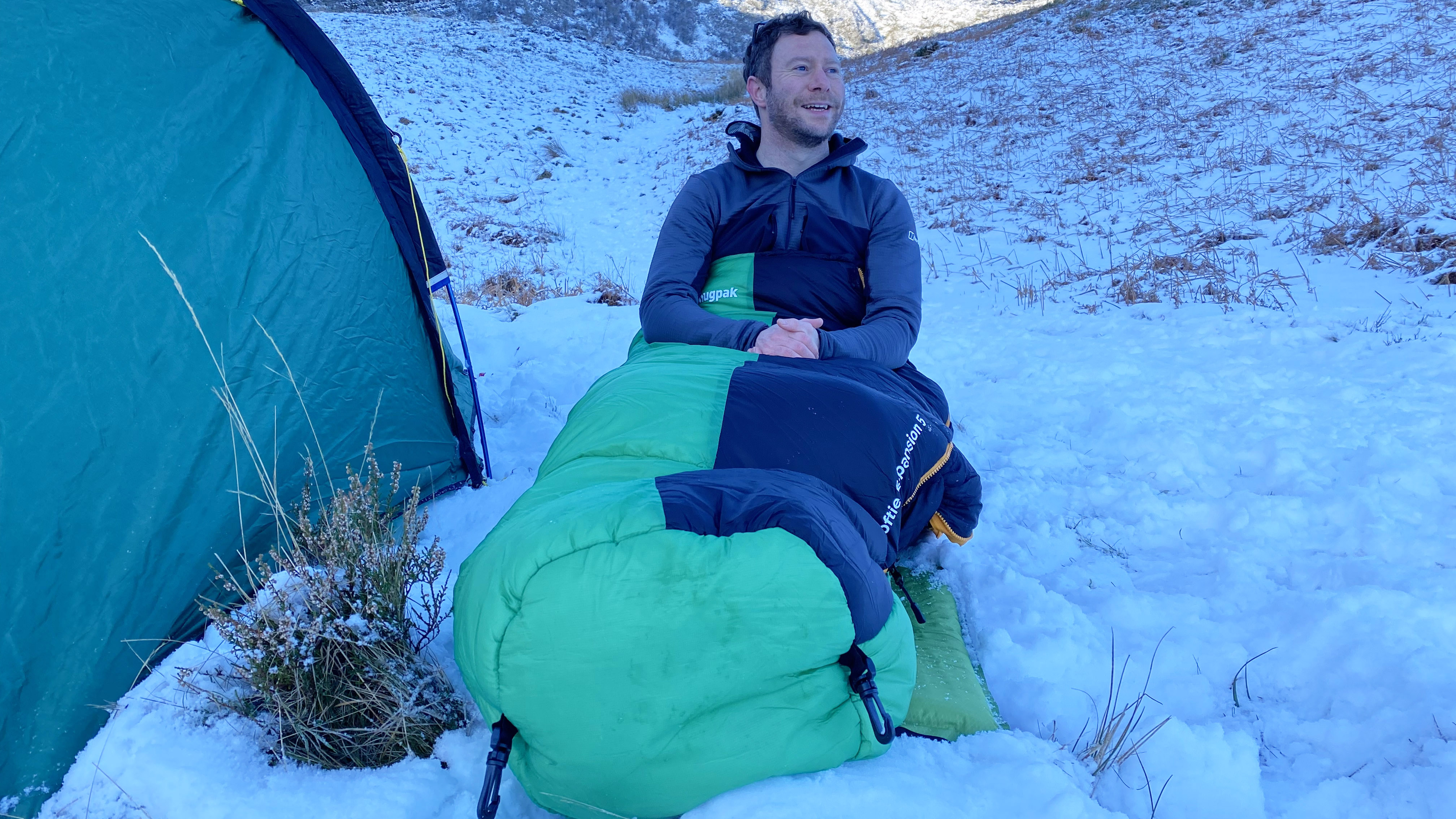
Here are the changes I make for preparing to camp in winter. For more detail on each consideration and a few product recommendations, click the links below:
Winter tent: A robust, low profile 4-season or winter tent will cope with the harsh conditions.
4-season sleeping bag: Most important of all, I take a sleeping bag with a low comfort temperature rating.
High R-value sleeping pad: A thicker pad with a higher R-value is necessary for winter.
Winter clothing and footwear: Warm, protective layers are vital and supportive hiking footwear is key when backpacking.
Dry bags: I protect all my essentials from getting wet, as well as keeping them organized, by bringing multiple dry bags.
Lighting and power: I always carry spare headlamps and a USB power bank.
A quality stove: A canister stove with a pressure regulator or a white gas stove is ideal.
Hot food and drink: Food and drink helps me to keep warm so I take more than I think I’ll need.
Hot water bottle: I get my sleeping bag toasty before shuffling in.
Meet the expert
Winter tent
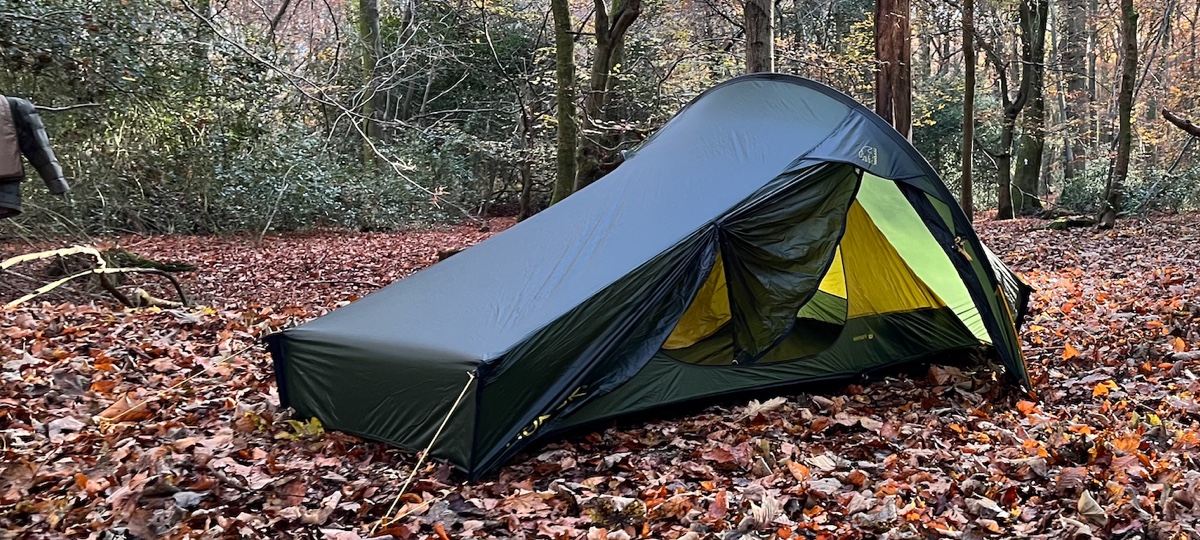
Start to browse four-season tents and it’ll soon dawn on you that winter camping kit is rather pricy. The quality of design and durability of materials required to cope with the harsh winter elements are higher than with standard tents, so you very much get what you pay for. Contrary to what you might think, getting your tent choice spot on isn’t as vital as making sure your sleeping system (bag and pad) is up to the task. However, it’s still very important. The breathable mesh and lightweight poles featured in summer models simply aren’t up to the task of keeping winter at bay.
Just to make things more complicated, there’s also a subtle difference between four-season and winter kit, which includes dedicated winter tents, sometimes given a five-season rating. Quite what this fifth, magical season is we’re not sure, but a shelter intended specifically for it should be fit for winter.
In summer, I opt for lightweight, packable backpacking models, like the Sea to Summit Alto TR2 or the Nemo Hornet. However, in winter, I want something more robust and with a lower profile that sheds the wind effectively. I’m a fan of the Wild Country Zephyros Compact 2 by Terra Nova, which is similar in design to the Terra Nova Laser Compact 2. Meanwhile the Nordisk Telemark 2.2 LW comes highly recommended by fellow camping expert and Advnture contributor Craig Taylor.
4-season sleeping bag
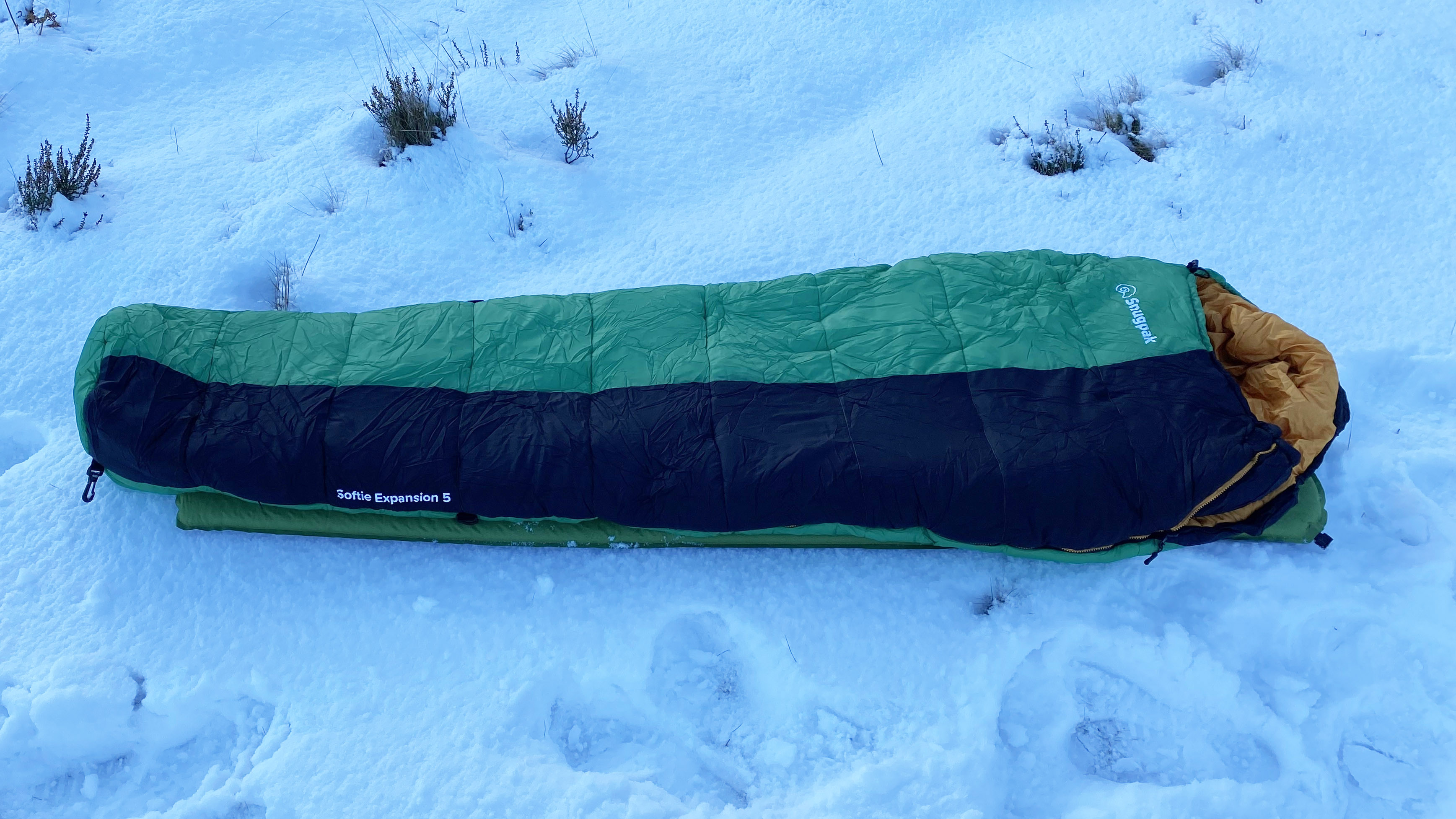
While having a tent that can cope with winter’s harsher conditions is important, having a quality, 4-season sleeping bag is essential. These highly insulating bags tend to be too warm for camping trips in summer – and for large parts of the shoulder seasons too – but once the mercury drops, they really come into their own.
Sleeping bags come with temperature ratings, with a value for comfort, limit and extreme. I don’t enjoy suffering, so plan to stay well within a bag’s comfort rating. For winter, I swap out the Nemo Forte (comfort rated to -1°C / 30°F) for the Snugpak Softie Expansion 5 (rated to -15°C / 5°F). The Softie is a synthetic bag and, while relatively affordable, it doesn’t pack down as small as down equivalents. If you’re looking for something that’s both insulating and highly packable, a down sleeping bag is your best option. The downside (excuse the pun) is that these tend to be very pricy. However, shop around and keep your eye out for deals and you can often pick them up below the list price.
High R-value sleeping pad
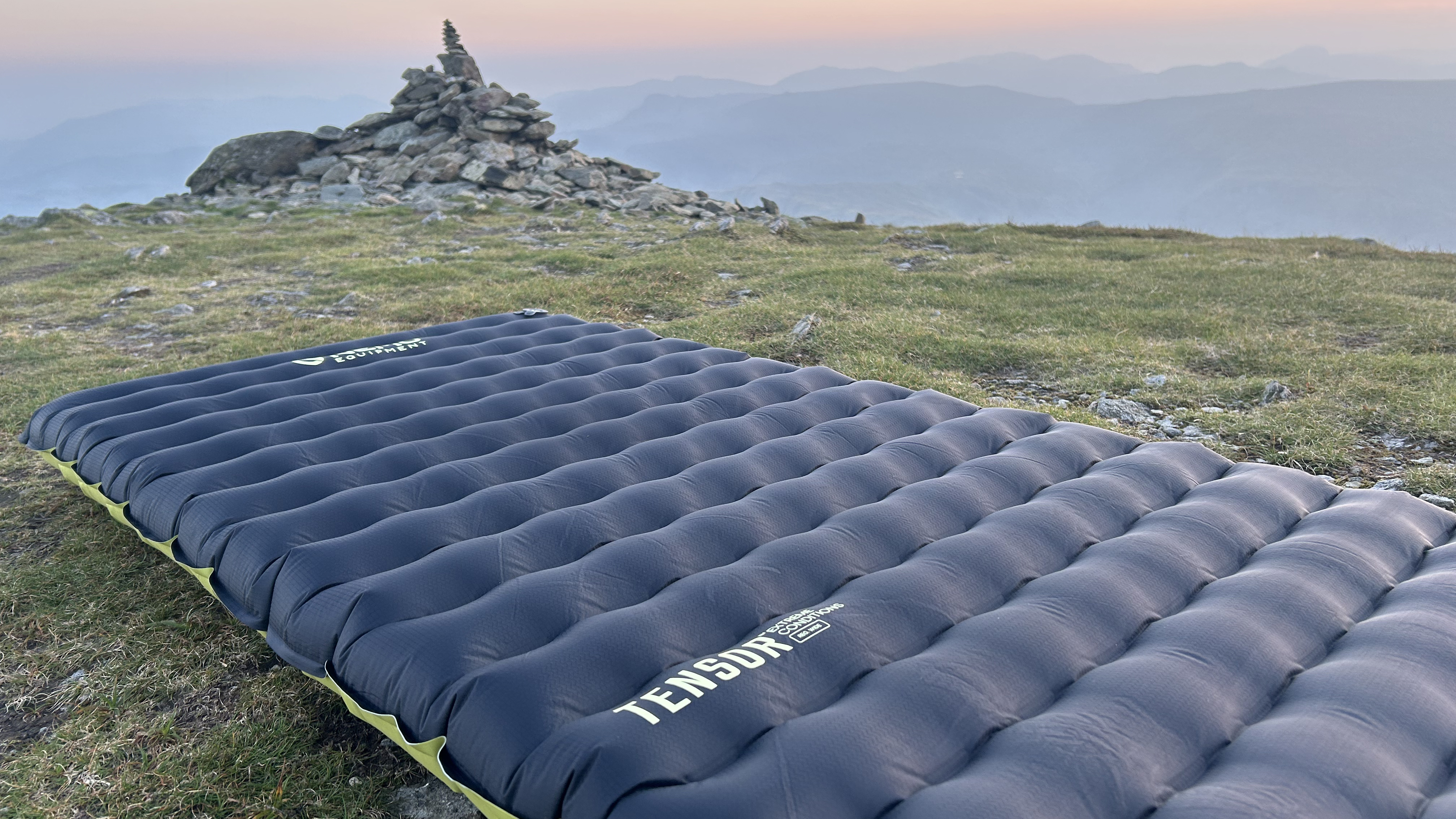
The two main jobs of a self-respecting sleeping pad are to provide comfort and insulate you from the ground below the tent, thus stopping the terrain from sapping your body heat away. Sleeping pads are given an R-value to indicate their insulating qualities – the higher the R-value, the better suited the pad is for winter camping. So, when choosing a sleeping pad for the cold season, look for an R-value of 4 or more.
Most of the year, I use the men’s version of the Mountain Equipment Helium 3.8, a lightweight, packable self-inflating mat. However, with an R-value of 3.6, it’s not ideal for cold weather camping. So, when Jack Frost’s about, I opt for the Nemo Tensor Extreme Conditions Ultralight Pad, with a whopping 8.5 R-value.
Winter clothing and footwear
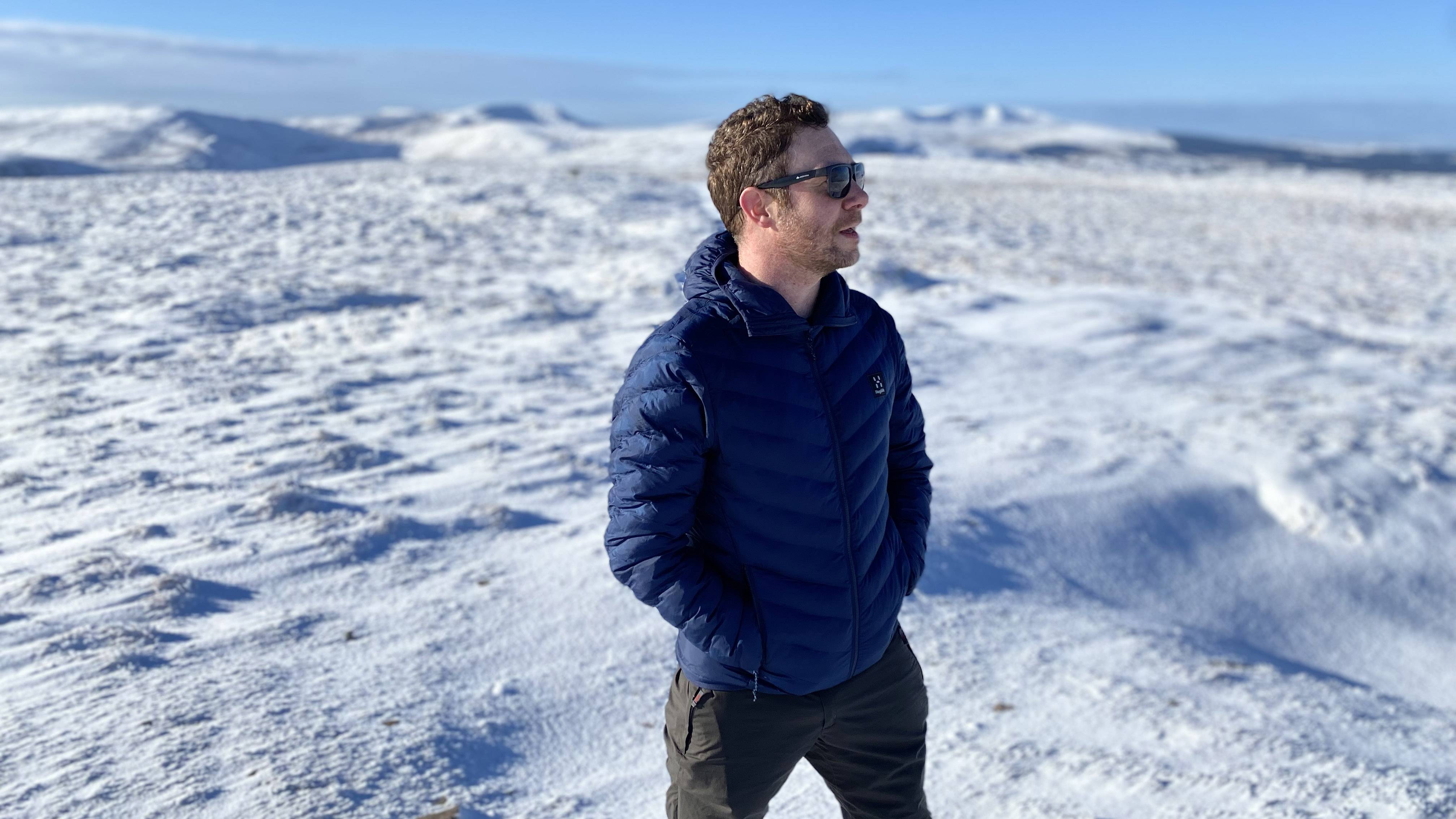
Fairly obvious this one – it’s important to pack plenty of warm layers, including hats and gloves, with spares in case any get wet. I generally take at least two of most items, which will include fleece jackets, a down jacket or synthetic puffer, a waterproof jacket and hiking pants.
If winter backpacking, wearing appropriate footwear is important, as I’ll be hauling a heavier load than in summer, so support and stability are a must. The best hiking boots or winter hiking boots tend to provide this, as well as being waterproof. Depending on where I was headed, I’d also consider a pair of gaiters. Nothing ruins a winter camping trip like boggy water getting in over the top and seeping into your boots.
Dry bags
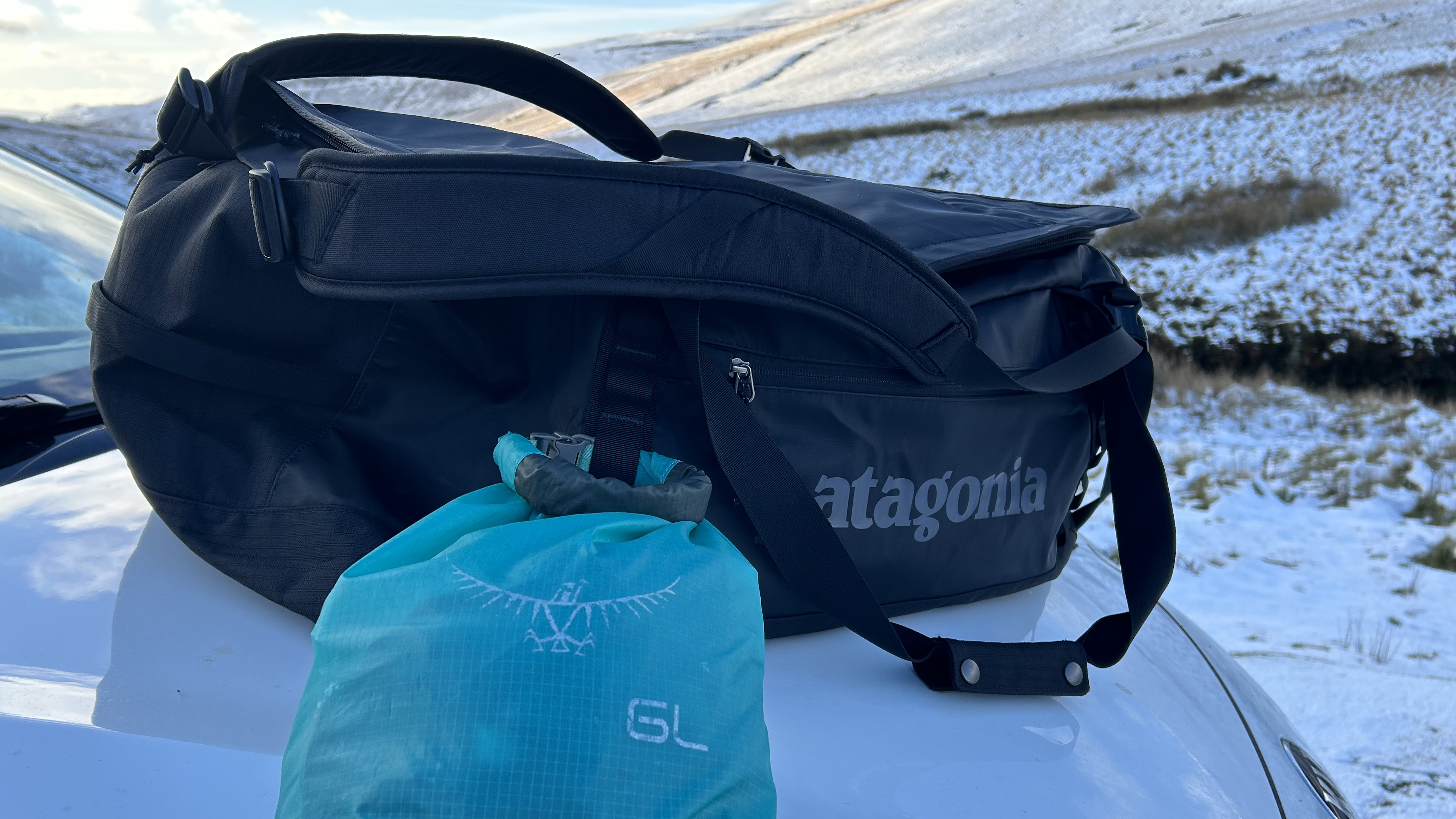
When winter camping and especially when winter backpacking, keeping your kit dry is half the battle. Most of my adventures take place in the hills and mountains of the UK, which can be rather wet environments at any time of year.
I take dry bags to carry my clothing, accessories and other key items as a habit all year round. It’s often the case that their waterproof qualities aren't properly put to use in the warmer months but I’m pretty much always glad of them in winter. Having multiple colored options is also great for keeping kit organized. Cooking stuff in green, spare clothes in red, gadgets in blue etc.
Lighting and power
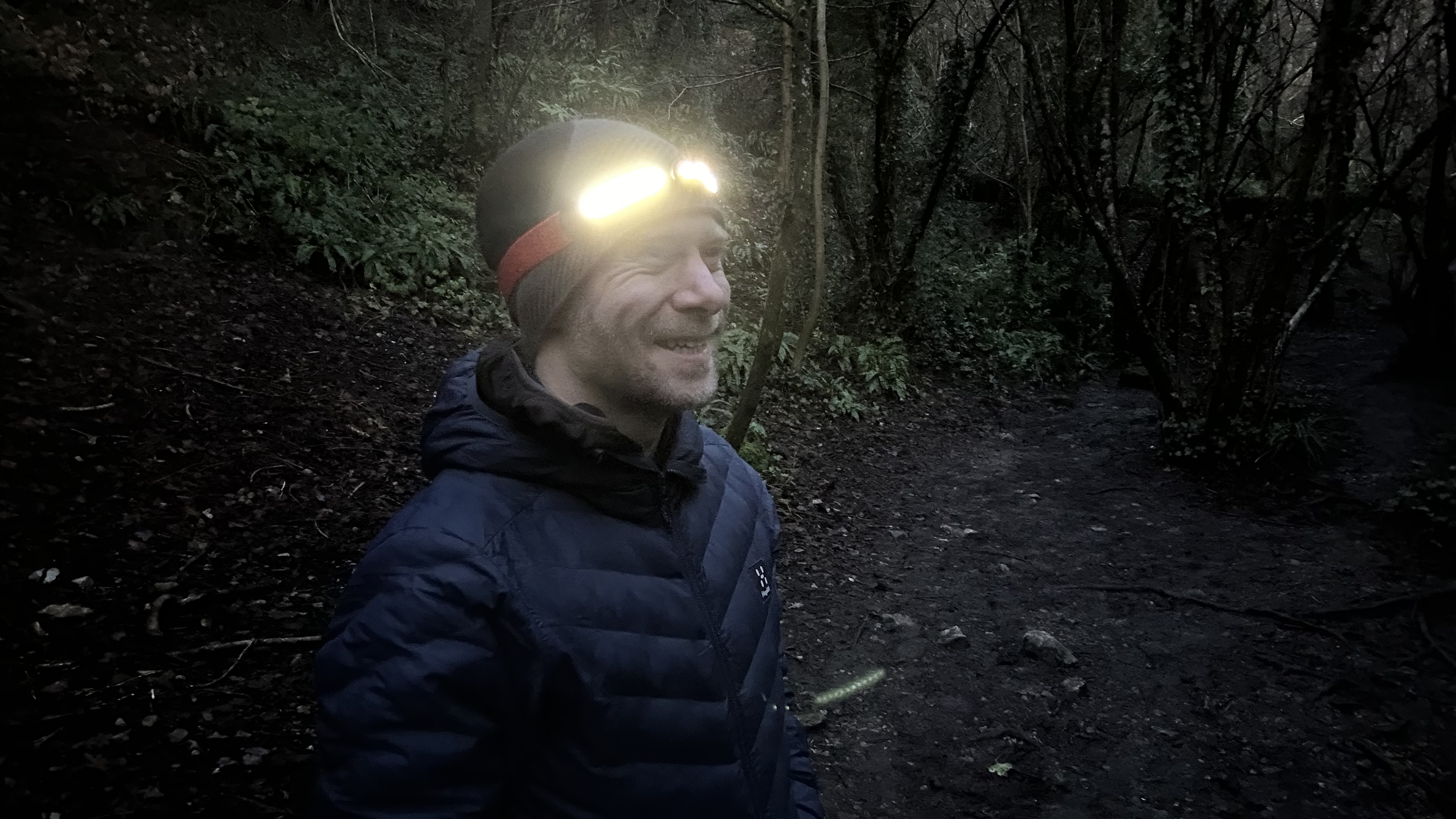
I always, always, always carry at least one spare headlamp for winter adventures, regardless of whether I’m hiking, running or camping. The lack of daylight hours means I’ll be relying on these little devices much more than during the warmer months. A lightweight, portable camping lantern, like the Outwell Pegasus Solar Lantern, is also a good shout when it comes to reading at night.
A multi-day trip will demand a lot from my lighting gadgets and other devices, so the ability to recharge them is more than handy. I always carry a USB power bank and cables for this very reason. Cold also drains batteries faster if they’re exposed, so I try to keep items like my phone well insulated during a winter adventure.
A quality stove
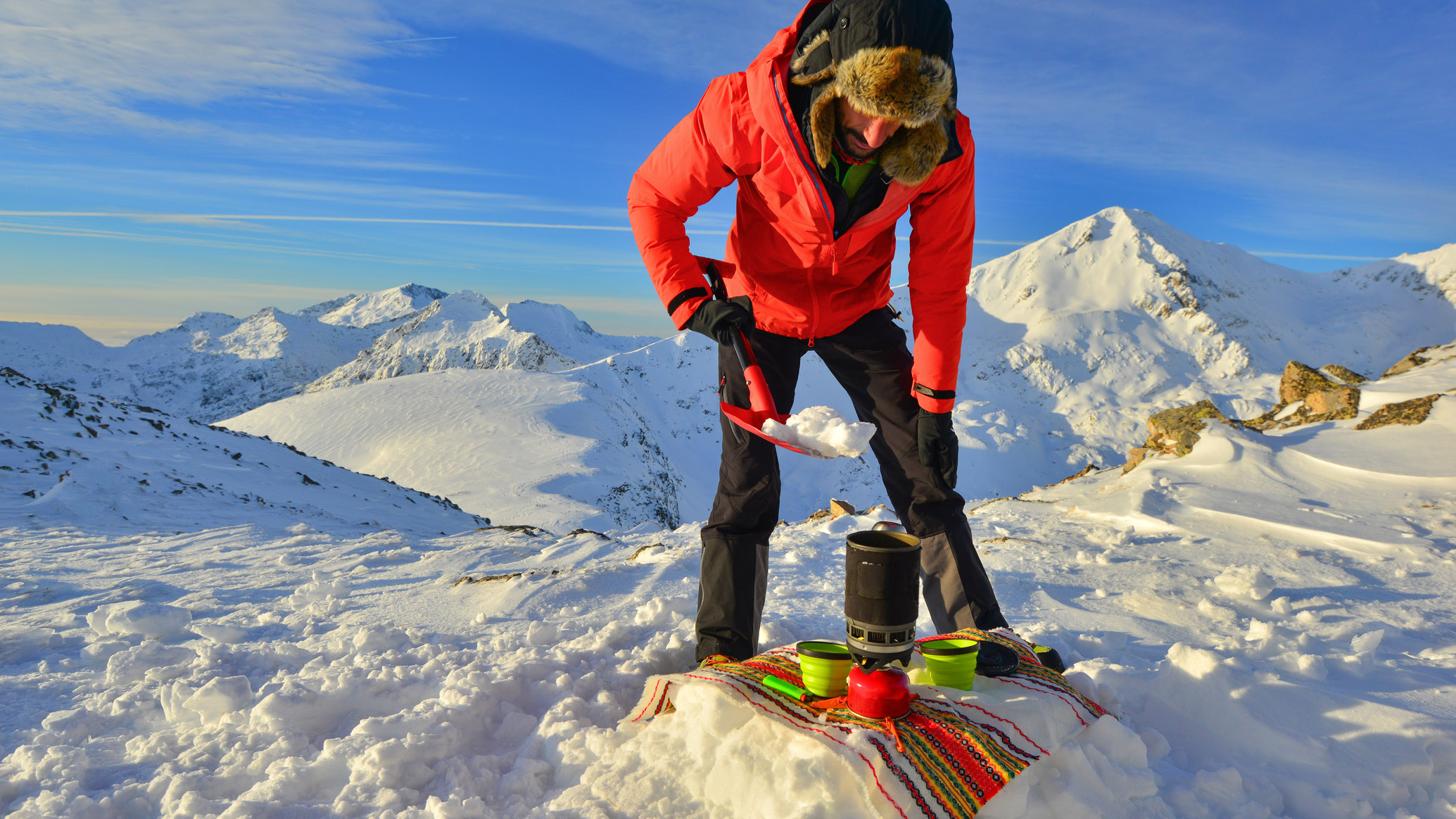
A quality stove and the right fuel will allow you to prepare warm food, brew up a delicious hot drink and prepare a hot water bottle. Classic backpackers’ propane or butane canister stoves are fine on the most part but white gas stoves are preferable for really frigid temps. Canister stoves suffer from a decrease in pressure when the mercury drops, which negatively impacts the strength of the flame. That is, unless you have a canister stove with a built-in pressure regulator, such as the Soto Windmaster – an ideal option with a great reputation.
Hot food and drink

Hot food and drink takes on a whole new importance in winter. Getting something warm inside is one of the best ways to fight off the cold, especially as it’s unlikely that I’ll be moving much once the sun sets. When it’s positively Baltic outside, I’m not going to have the luxury of preparing ingredients outside on the camping table, so freeze-dried meals are a really good option, entailing minimal preparation and faff to bring to life. Hot or cold, I take more food than I think I’ll need for winter trips.
I’m a big fan of piping hot joe, so a coffee maker is always in my pack in winter, usually an AeroPress. Insulated bottles, flasks and food containers are a huge help, keeping your creations warm for at least a few hours.
Hot water bottle
My last tip is a great way to keep things warm and cozy when camping in cold conditions. Take a hot water bottle along and fill it up half an hour before getting into your sleeping bag. Giving it time to work its magic means that you’ll have a toasty bag to shuffle into when it’s time for 40 winks.







